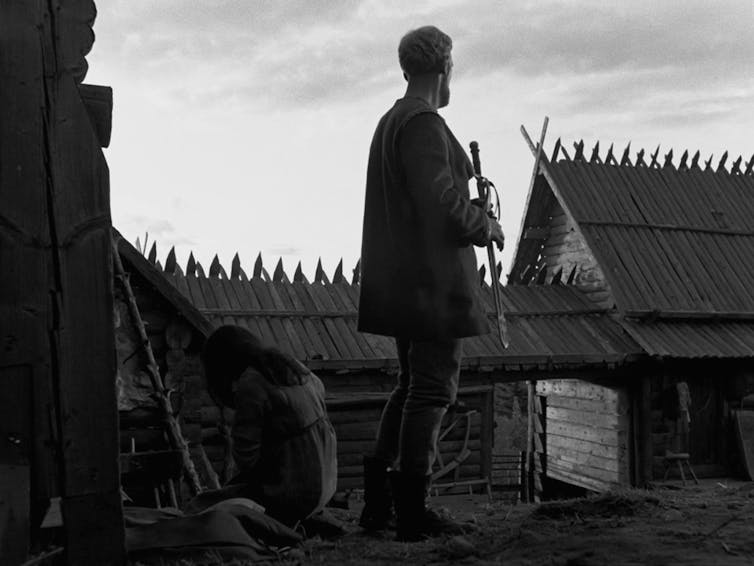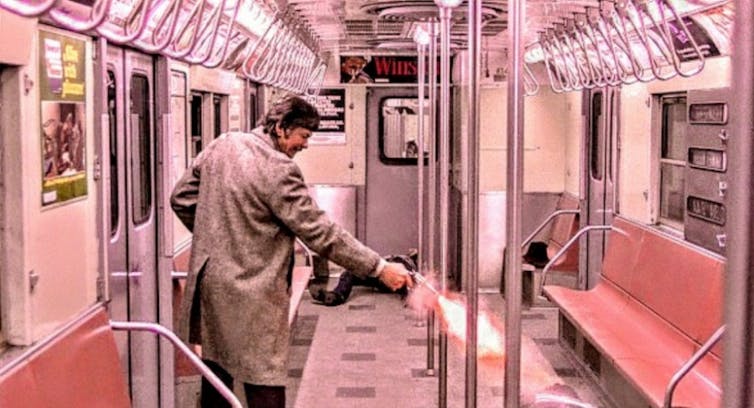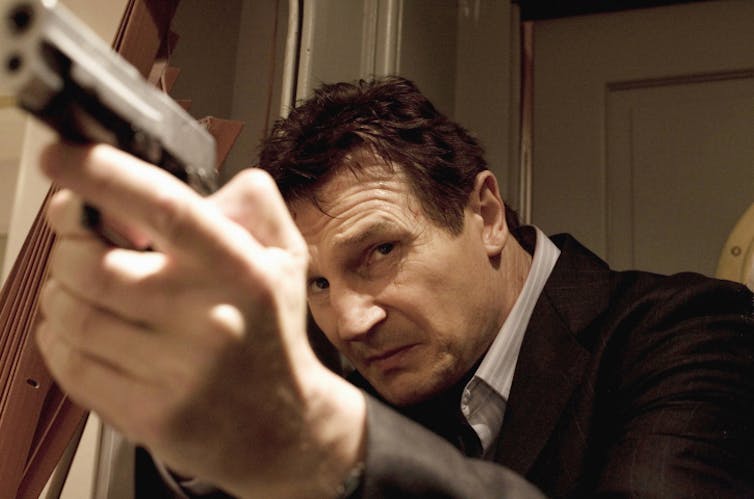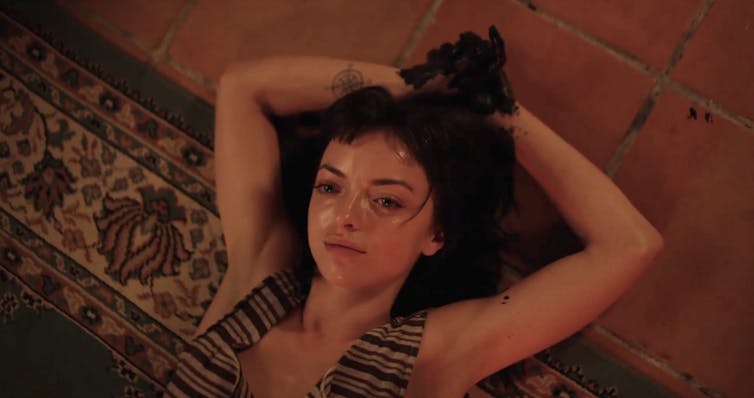they now focus on the women, instead of their dads
- Written by Isobella Austin, PhD Candidate in Cinema and Screen Studies, Swinburne University of Technology
Narratives around sexual assault in Hollywood are changing – on screen and off.
There is a longstanding genre of film dedicated to depicting the crime of rape as it affects the fathers of the victims, showing fathers dishing out violent retribution.
Contemporary directors have been moving away from depictions like this, with many films choosing to complicate the simplistic morality of their predecessors.
But these films have generally been low-budget affairs with limited cinematic runs — unlike the budgets and stars pumped into stories about fathers, like Taken (2008) and Death Wish (2018).
With the success of 2020’s Promising Young Woman, it is likely there will be more revisionist films like these reaching wide audiences and critical acclaim.
This is a refreshing change of pace in a genre packed with films depicting rape as an attack on the father’s honour.
Read more: Weinstein conviction a partial victory for #MeToo, but must not overshadow work still to be done
Revenge of the father
The rape-revenge film genre has a fairly sleazy reputation, summoning images of a battered and traumatised woman taking violent revenge on her attacker(s), as in I Spit On Your Grave (1978).
These early films rose in prominence in 70s and relied heavily on the shock value of brutal rape scenes, followed by the even larger shock of the victim’s sadistic revenge.
But entries in the genre didn’t always focus on the reaction of the victim.
Frequently, filmmakers found more mainstream success if the avenger was the victim’s father.
The film that likely brought prominence to the genre was Ingmar Bergman’s 1961 Academy Award winning The Virgin Spring.
 The Virgin Spring focuses on the father’s pain, not the daughter’s being.
IMDB
The Virgin Spring focuses on the father’s pain, not the daughter’s being.
IMDB
The Virgin Spring begins as the story of the titular virgin, Karin (Birgitta Peterson), but after her rape and murder the focus pivots to her distraught father Töre (Max von Sydow).
In 1972, Wes Craven, an admirer of the film, made the much more violent The Last House on the Left, which takes just a beat to focus on the pain and humiliation of Mari (Sandra Peabody), before relishing in the sadistic revenge her parents take on her murderers.
Read more: Wes Craven: the scream of our times
Unlike Mari and Karin, Carol (Kathleen Tolan) of Death Wish (1974) survives her assault, but the film ignores her pain.
Instead, Death Wish focuses on her stoic father Paul (Charles Bronson) and whiny husband Jack (Steven Keats). Jack is heartbroken when he hands the catatonic Carol over to the care of a mental hospital, and Paul takes his grief out on the petty criminals of New York City.
 In Death Wish, a daughter’s rape must be avenged over and over again.
IMDB
In Death Wish, a daughter’s rape must be avenged over and over again.
IMDB
First with a sock full of pennies, and then with a gun, former pacifist Paul becomes a powerful deterrent to would-be criminals, reducing crime in his city by a staggering amount.
This movie has four sequels of roughly the same plot and varying quality (1985’s Death Wish 3, in which Kersey defends an apartment building full of senior citizens, is a lot of fun) and the 2018 remake starring Bruce Willis.
Planning a murder
I have watched an unhealthy number of these movies, but perhaps the most illustrative in this tradition is Taken.
Liam Neeson plays former Green Beret Bryan Mills, who begins the film attempting to rebuild his relationship with 17-year-old daughter Kim (Maggie Grace).
Bryan is horrified when Kim wants to visit Paris accompanied only by her irresponsible friend Amanda (Katie Cassidy). He reluctantly agrees, but his hesitance is vindicated when Kim and Amanda are kidnapped by an Albanian sex trafficking ring.
 In Taken, Liam Neeson picks up the gun – just like men before him.
IMDB
In Taken, Liam Neeson picks up the gun – just like men before him.
IMDB
Bryan travels to Paris and tortures every Albanian he can get his hands on. In one particularly upsetting scene, he electrocutes information out of a mid-level gang member, Marko (Arben Bajraktaraj). When Bryan has what he needs, he turns the electricity on and walks out, leaving Marko to be gradually electrocuted to death.
Eventually, Bryan fulfils his fatherly responsibility by murdering everyone and rescuing Kim.
What women need
Taken ends with Kim back in America with Bryan, apparently not changed at all by her ordeal. She is just as cheerful as she was in the opening scenes.
Of course she is: this is not her story. It is Bryan’s story and he got exactly what he wanted. Kim is safe, and his authority as her father no longer in question.
Even rape-revenge films starring women rarely focused on her internal journey, instead showcasing her acts of incredible violence. But new iterations in rape-revenge centre the protagonist’s path to healing from trauma.
Natalia Leite’s 2017 film M.F.A. (released in Australia as Revenge Artist) brings its audience into the experience of its protagonist Noelle (Francesca Eastwood), who learns that violent revenge may be cathartic, but does not heal her trauma.
 Finally, women are being placed in control of their own stories.
IMDB
Finally, women are being placed in control of their own stories.
IMDB
Promising Young Woman focuses on a protagonist’s inability to cope with her friend’s suicide following a sexual assault. The HBO/BBC series I May Destroy You follows a woman doing her best to put her life back together after a traumatic assault.
More and more stories are being brought to screen focusing on what a rape survivor needs — rather than who her father wants to punch. This is an industry realising when a woman is raped, it is a tragedy because that woman is a human being, not because she is a daughter.
If this article has raised issues for you, or if you’re concerned about someone you know, call the 1800 Respect national helpline on 1800 737 732 or Lifeline on 13 11 14.
Authors: Isobella Austin, PhD Candidate in Cinema and Screen Studies, Swinburne University of Technology





